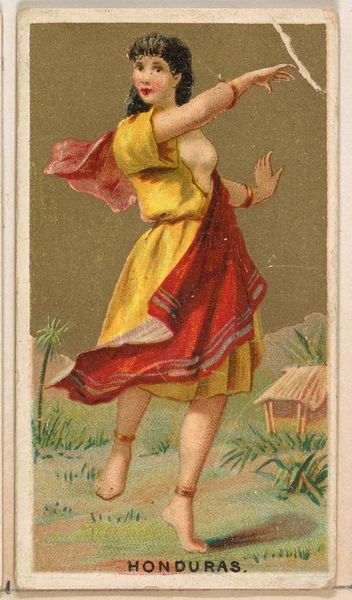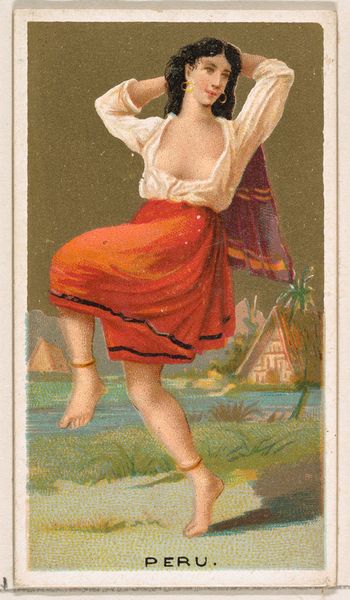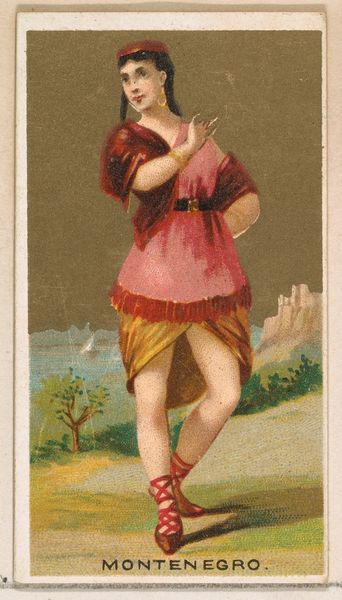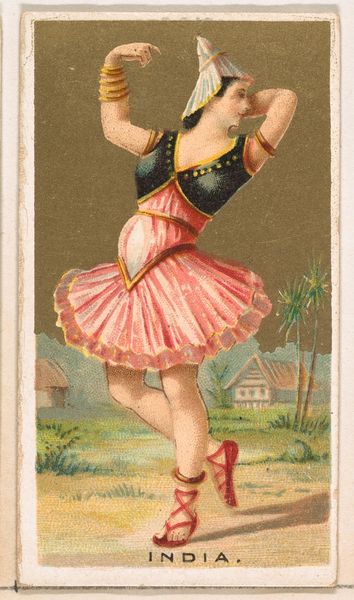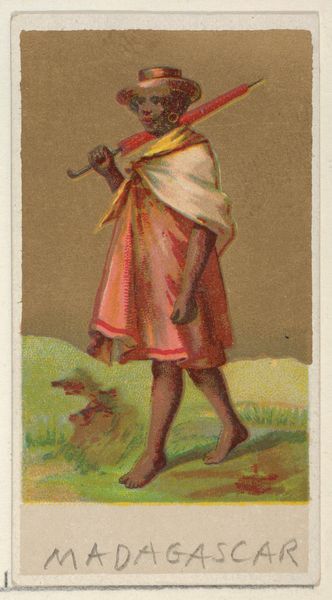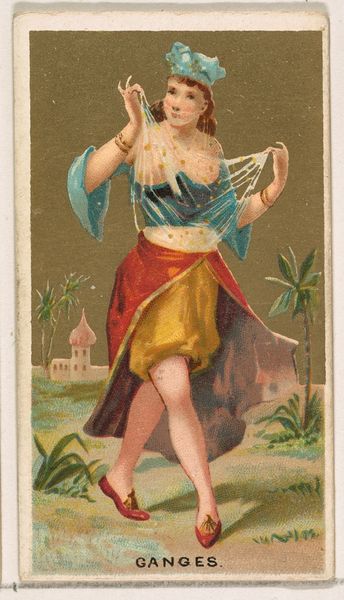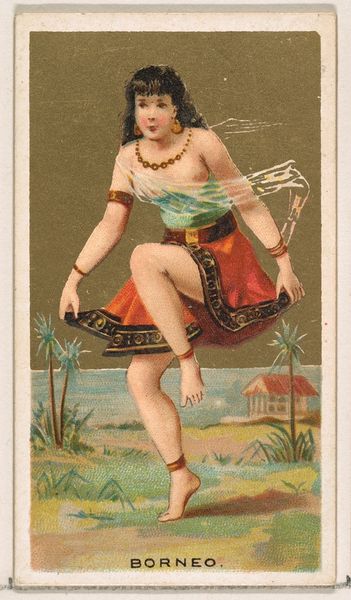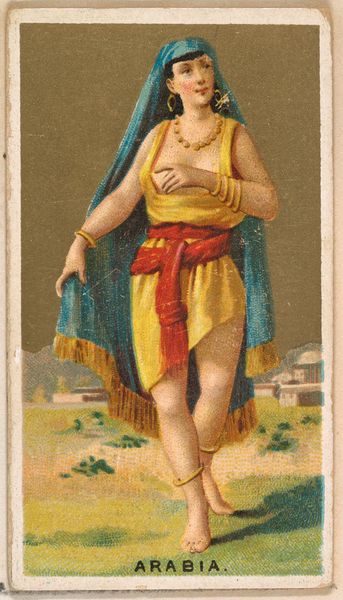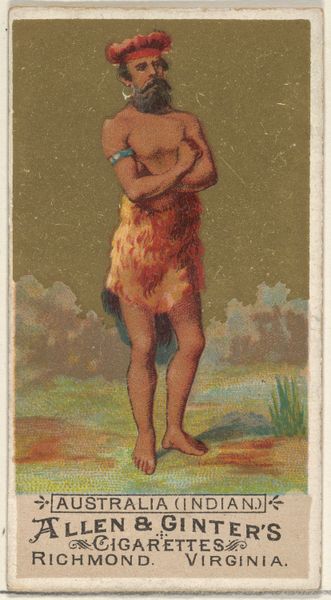
Soudan, from the Dancing Girls of the World series (N185) issued by Wm. S. Kimball & Co. 1889
0:00
0:00
drawing, print
#
drawing
#
16_19th-century
# print
#
oil painting
#
female-nude
#
orientalism
#
watercolour illustration
#
genre-painting
#
portrait art
Dimensions: Sheet: 2 11/16 × 1 1/2 in. (6.8 × 3.8 cm)
Copyright: Public Domain
Curator: My first thought is, this feels surprisingly vibrant. The colours are so rich and lively. Editor: It is indeed captivating. We're looking at a print entitled "Soudan, from the Dancing Girls of the World series (N185)" issued in 1889 by Wm. S. Kimball & Co. The work is currently housed at the Metropolitan Museum of Art. It presents a dancer, seemingly frozen mid-motion in what’s meant to represent a Sudanese landscape. Curator: "Dancing Girls of the World"...it's exoticizing, of course. The woman’s posture and bareness seem like a Western fantasy of the ‘Orient,’ and she's posed like some odalisque from a painting. Editor: Absolutely. It embodies the orientalist gaze prevalent at the time, presenting a skewed vision of Sudanese culture. It's crucial to remember this was made for cigarette cards. How do these depictions feed into stereotypes and power dynamics between the West and other cultures? Curator: Well, that framing—cigarettes—certainly influences its accessibility. It becomes almost commonplace, readily consumed by a wide audience. Imagine collecting these cards and gradually constructing a worldview through these fragmented representations. How many viewers actually had firsthand knowledge to question these representations? Editor: That accessibility also meant normalization. These images were essentially tools in the colonial project. And while some may view the attire, the red fez and wrapped head covering, and the suggestive dancing as charming, they’re reinforcing prejudiced and racist caricatures that were projected onto colonized peoples. What effect do you think its small size, the dimensions of a trading card, have on the way people see the artwork? Curator: That's a pertinent question! Their miniature quality would encourage private enjoyment, fostering an intimate viewing experience disconnected from social awareness. Its scale makes the 'othering' all the more manageable, digestible. Editor: Ultimately, artworks like this can become springboards to consider our complicity. It's crucial that the public knows this piece must prompt important dialogues about how such seemingly benign art actually promotes historical and contemporary inequality and misrepresentation. Curator: Indeed, unpacking these loaded images demands careful historical awareness. Recognizing how these images circulated—within the very infrastructure of colonialism—that's paramount.
Comments
No comments
Be the first to comment and join the conversation on the ultimate creative platform.
